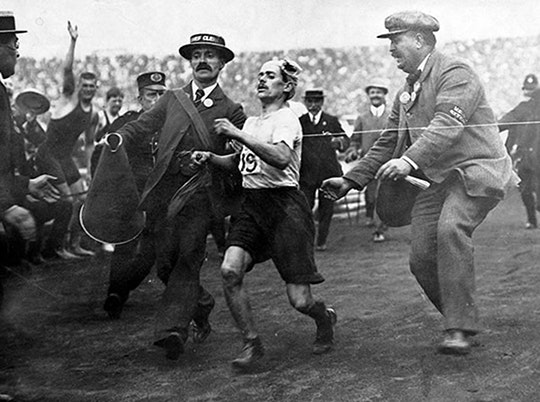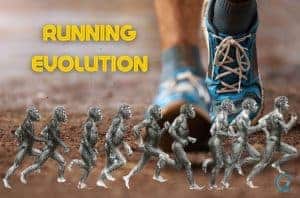When Was Running Invented? Unraveling The Ancient History Of Human Locomotion
Running: An Evolution, Not an Invention
To ask "When was running invented?" is to misunderstand its very nature. Running was never "invented" in the traditional sense. Instead, it is a natural evolution of human locomotion, a gait by which humans and other animals move quickly on foot, with periods where all feet are momentarily off the ground. Evolutionary biologists largely agree that this ability developed over millions of years, shaping our physiology and making us exceptionally well-suited for endurance and speed. The story of running begins with bipedalism – the ability to walk upright on two legs. This crucial adaptation emerged around 7 million years ago, as evidenced by the skeletal remains of early human ancestors like the Chadshahs. While walking came first, the capacity for efficient running soon followed, providing a significant advantage in changing environments. It’s a fundamental human instinct, deeply rooted in our biology, not a conscious creation.The Dawn of Running: A Survival Imperative (Millions of Years Ago)
Before it became a leisure activity or a competitive sport, running was quite simply a matter of life and death. Our prehistoric ancestors, dating back approximately two million years ago, relied on running for their very existence. This period marks when running truly began as a functional necessity. Imagine a world without modern tools or transportation. Early humans had to move swiftly across rugged landscapes to: * **Hunt and Gather:** Chasing down prey or quickly reaching valuable food sources. Running allowed them to outlast many animals through persistence hunting, a strategy where humans would relentlessly pursue an animal until it collapsed from exhaustion. * **Evade Predators:** Fleeing from fearsome predators was a constant threat. The ability to sprint away from danger was paramount for survival. * **Migration:** Covering vast distances for migration in search of new resources or safer territories. This relentless demand for speed and endurance profoundly shaped human evolution. Our unique body structure, from our long legs and spring-like tendons to our efficient cooling systems (sweat glands), are all adaptations that made us exceptional runners. Running, therefore, wasn't just something we *did*; it was something that *made us who we are*.From Necessity to Spectacle: Running's Transformation into Sport
While the act of running is as old as humanity itself, its evolution from a survival skill to a competitive sport and cultural activity is a fascinating journey that spans millennia. The exact date at which human beings began to run remains shrouded in the mysteries of time, but the transition to organized events is much clearer.Early Glimpses: Prehistoric and Ancient Civilizations
Even before formal competitions, there's evidence that running held a significant place in early human societies. * **15,000 BCE:** Early cave paintings depict scenes that suggest sprinting and even relay races, indicating that running was observed, practiced, and perhaps even celebrated in prehistoric communities. These depictions show that running was an ancient and natural activity, documented long before written history. * **3800 BCE:** Ancient Egyptians were known to celebrate running events, highlighting its early presence in organized societal activities. * **Ancient Persia:** Running also held significance in ancient Persian culture, often associated with messengers and military training. These early instances suggest that humans, perhaps instinctively, found joy and challenge in testing their running abilities against one another, even if not yet in a formalized "sport" context.The Cradle of Sport: Running in Ancient Greece
The most definitive turning point for running as a recognized sport comes from ancient Greece. * **776 BCE:** This year is widely cited as the birth of competitive running. The first recorded running event took place during the ancient Olympic Games in Olympia, Greece. For the initial 56 years of the festival, a footrace was its *only* athletic event. This race, known as the *stadion*, was a sprint covering approximately 157–196 meters (the exact distance varied slightly between stadiums). This event marked a pivotal moment: running was no longer just a means to an end; it became an end in itself – a test of speed, strength, and human prowess. The ancient Olympics laid the groundwork for competitive athletics and enshrined running as a central element of human culture and physical achievement. Other races like the *diaulos* (two stadia) and the *dolichos* (long-distance race) were later introduced, along with the *hoplitodromos*, where athletes ran in full armor.The Resurgence and Modern Era of Running
After the decline of the ancient Olympic Games, competitive running experienced a lull, but its inherent appeal ensured its eventual resurgence.The Birth of Modern Competitions
* **Early 19th Century:** Foot races began to gain prominence again, particularly in England and the United States, as informal competitions and challenges. * **1896:** This year was monumental for running. The modern Olympic Games were revived in Athens, Greece, and running events were central to the program. Crucially, the first modern marathon was held, inspired by the legendary run of Pheidippides from Marathon to Athens. This event captured the public imagination and cemented running's place in the global sporting landscape. * **1906:** International track and field competitions began to solidify, leading to standardized rules and distances.Running as a Global Phenomenon
Throughout the 20th century, running's popularity exploded. The invention of specialized running shoes made the activity more accessible and comfortable for the general public. Marathons, like the Boston Marathon, became iconic events, often used to raise money for charity, further integrating running into the social fabric. Today, running is celebrated worldwide as a competitive sport, a fitness activity, and a lifestyle. From elite athletes competing in sprints, middle-distance, and long-distance races at the Olympics to millions participating in local 5Ks, half-marathons, and fun runs, running continues to be a universal and beloved activity. It's a symbol of endurance, discipline, and well-being, connecting us to our ancient past while propelling us into a healthy future.Final Summary
So, when was running invented? The simple answer is: it wasn't. Running is not an invention but a fundamental human ability that evolved over millions of years as a crucial survival strategy. Our ancestors relied on it for hunting, gathering, and escaping danger, shaping our physiology in the process. While the act of running is ancient, its transformation into an organized, competitive sport can be traced back to 776 BCE with the first recorded running event at the ancient Olympic Games in Greece. From there, it evolved through various ancient civilizations, saw a resurgence in the modern era with the revival of the Olympic Games in 1896, and has since become a global phenomenon, enjoyed by billions for competition, fitness, and sheer pleasure. Running's journey from a primal necessity to a cherished sport is a testament to its enduring significance in the human story.
When was Running Invented? (A Fun History of Running)

When was Running Invented? (A Fun History of Running)

History of Running: A Journey Through Time